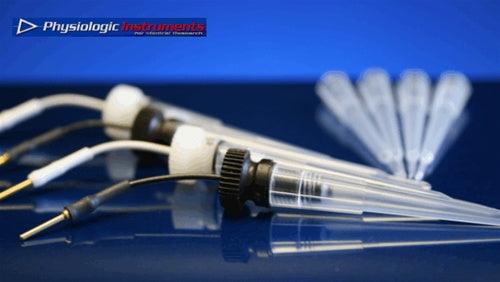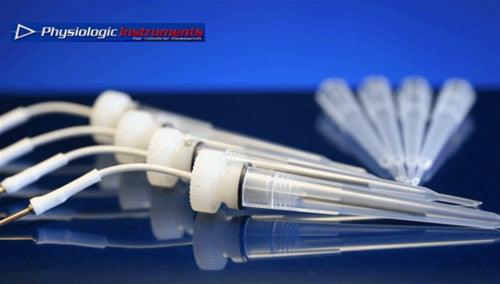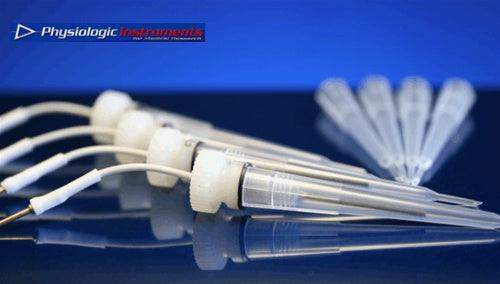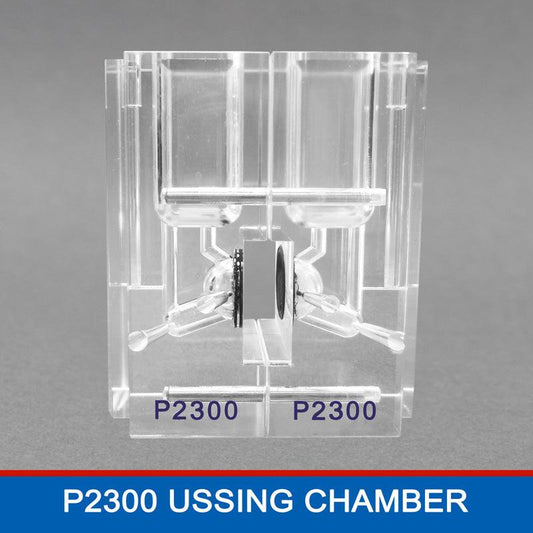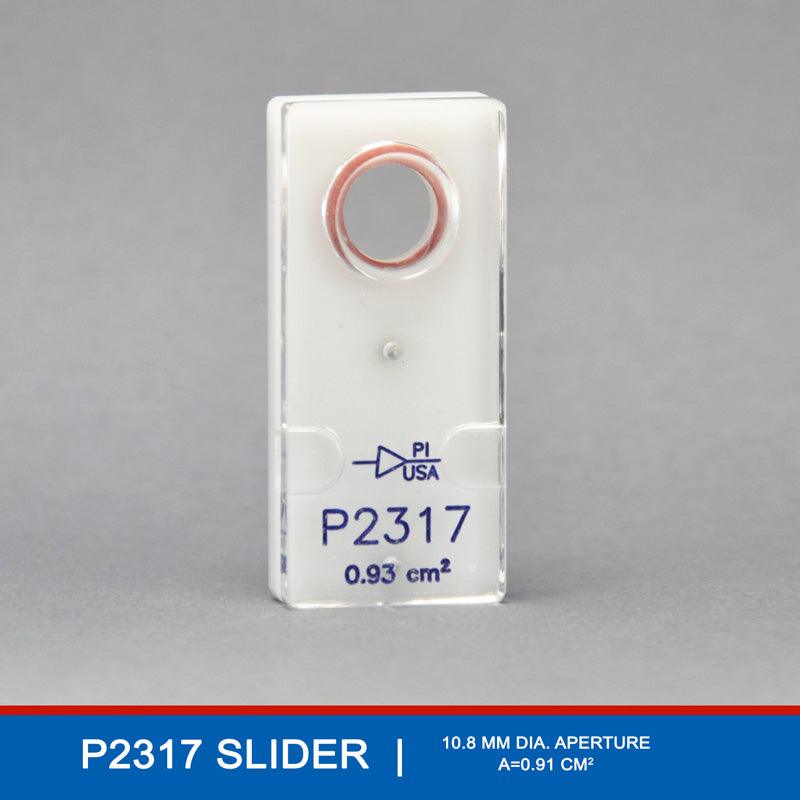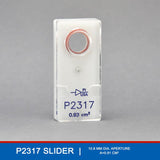P2317 EasyMount Ussing Chamber Slider
The P2317 EasyMount Ussing Chamber Slider is designed for optimal use in diffusion studies across synthetic membranes, offering a precision 10.8 mm circular aperture with a 0.91 cm² area that allows for controlled and consistent membrane interface. Its standout feature is the soft silicone rubber washer, which provides a gentle yet effective seal against the membrane without requiring mounting pins or complex assembly, reducing the potential for membrane distortion and leakage. This design is particularly advantageous in experiments where maintaining membrane integrity is critical, as it securely holds delicate synthetic sheets while allowing for easy setup and sample replacement. Its compatibility with the P2300 Ussing Chamber further enhances experimental efficiency, making the P2317 an ideal choice for researchers studying membrane permeability and diffusion.
⦿ To be used with P2300 EasyMount Ussing Chambers- Regular price
- $218.00
- Regular price
-
- Sale price
- $218.00
- Unit price
- per
Product Description

P2317 EasyMount Ussing Chamber Slider for Diffusion Studies Across Synthetic Membrane Sheets
APETURE SIZE: 10.8MM | Area = 0.91 cm2
The P2317 EasyMount Ussing Chamber Slider is a specialized 10.8 mm diameter tissue holder developed for use with the EasyMount Ussing Chamber model P2300, tailored for studies focused on diffusion across synthetic membranes. This slider features a circular aperture with an effective area of 0.91 cm², optimized for applications where a stable and secure membrane interface is required. Unlike other mounting designs, the P2317 slider is constructed without mounting pins; instead, it incorporates a soft silicone rubber washer that creates a precise and gentle seal against the membrane.
This silicone washer design offers multiple advantages, particularly in experiments requiring the use of synthetic membrane sheets, such as permeability and diffusion studies. The soft material of the washer ensures an effective seal that prevents leakage and minimizes any structural stress on delicate membranes, maintaining membrane integrity throughout the experimental process. The absence of mounting pins also facilitates rapid assembly and disassembly, allowing for efficient sample changes while reducing potential points of membrane distortion.
The P2317 EasyMount Slider is a valuable tool in laboratory settings, especially for researchers examining the transport properties and diffusion rates of synthetic membranes. Its compatibility with the P2300 Ussing Chamber, coupled with a design that emphasizes gentle sealing and ease of use, ensures reproducible and high-quality data collection for diffusion studies across synthetic membranes under controlled experimental conditions.
P2317 EasyMount Ussing Chamber Slider Instructions
The P2317 EasyMount Slider is specifically designed for diffusion studies across synthetic membranes in the P2300 Ussing Chamber system. Here’s a step-by-step guide on using the P2317 slider in an experiment, from preparing and mounting the membrane to running and completing the diffusion study.
1. Preparing the Membrane Sample
- Membrane Selection: Select a synthetic membrane suitable for the diffusion study. Ensure it is large enough to fully cover the 10.8 mm diameter circular aperture (0.91 cm² area) of the P2317 slider.
- Trimming (if necessary): Trim the membrane to fit the slider, keeping it slightly larger than the aperture for easy handling.
2. Mounting the Membrane on the P2317 Ussing Chamber Slider
-
Applying Adhesive (if needed): Although the P2317 slider includes a soft silicone rubber washer to seal the membrane without adhesive, certain synthetic membranes might still benefit from a light adhesive layer. If so:
- Apply a thin, even layer of non-reactive adhesive (e.g., silicone-based adhesive) around the edge of the silicone washer, avoiding the central area over the aperture.
- Positioning the Membrane: Place the membrane flat across the silicone washer on the P2317 slider, ensuring it is taut and wrinkle-free. The silicone washer will conform to the membrane, creating a tight seal against the membrane’s surface.
- Secure Fit: Gently press the membrane against the washer to ensure full contact. Avoid stretching the membrane, as this could affect its structural integrity.
3. Inserting the Slider in the P2300 Ussing Chamber
- Chamber Preparation: Prepare the P2300 Ussing Chamber by filling each compartment with the desired solution. Typically, diffusion studies require identical solutions on both sides initially to establish baseline conditions. Pre-warm the solution to the appropriate temperature if necessary.
- Mounting the Slider: Insert the P2317 Ussing chamber slider with the mounted membrane into the chamber, aligning it carefully to ensure that the membrane forms a barrier between the two compartments. The silicone washer in the slider will press against the membrane, maintaining a tight seal without introducing significant tension or structural changes to the membrane.
- Securing the Chamber: Ensure that the chamber compartments are tightly closed around the slider to prevent leakage. Confirm that the membrane is securely positioned and that each side of the membrane faces a separate chamber compartment.
4. Setting Up Electrodes and Sensors
- Electrode Placement: Position electrodes (e.g., voltage and current electrodes) within each chamber compartment as per the P2300 Ussing Chamber’s specifications. This setup allows you to measure changes in electrical parameters as ions or molecules diffuse across the synthetic membrane.
- Sensor Calibration: If using additional sensors (e.g., pH, ion-specific electrodes), calibrate them according to the experiment's requirements before introducing experimental treatments.
5. Conducting the Diffusion Experiment
- Baseline Measurements: Record initial baseline readings, such as ion concentration gradients, potential differences, or other parameters depending on the membrane properties and experimental design.
- Introduce Experimental Conditions: Add the experimental compound (e.g., a solute intended for diffusion) to one side of the chamber. This will create a concentration gradient across the synthetic membrane.
- Data Collection: Continuously monitor and record the parameters of interest (e.g., ion concentration, voltage, pH) to track the diffusion rate and membrane permeability over time.
6. Completing the Experiment and Cleaning the Equipment
- Data Analysis: Save and analyze the collected data to interpret the diffusion rate and other transport properties of the synthetic membrane.
- Disassemble the Chamber: Carefully remove the P2317 slider from the Ussing chamber, gently detach the membrane (if adhesive was used, it may need to be discarded).
- Cleaning Protocol: Rinse the P2317 slider, the Ussing chamber compartments, and any sensors or electrodes with distilled water, followed by a compatible cleaning solution, to ensure they are free from residual compounds and ready for future use.
The P2317 EasyMount Ussing Chamber Slider, when used in conjunction with the P2300 Ussing Chamber, offers a streamlined and precise approach to diffusion studies across synthetic membranes. Its silicone washer design ensures an effective seal, minimizing leakage and maximizing experimental accuracy for high-quality data collection in synthetic membrane research.


